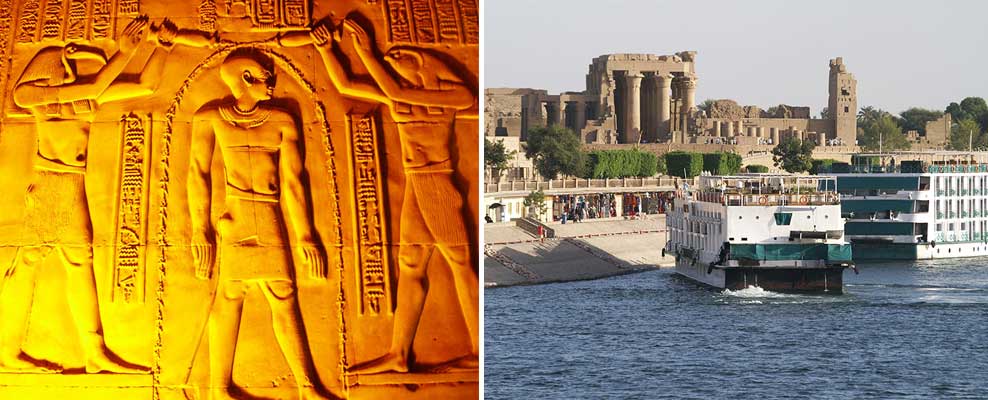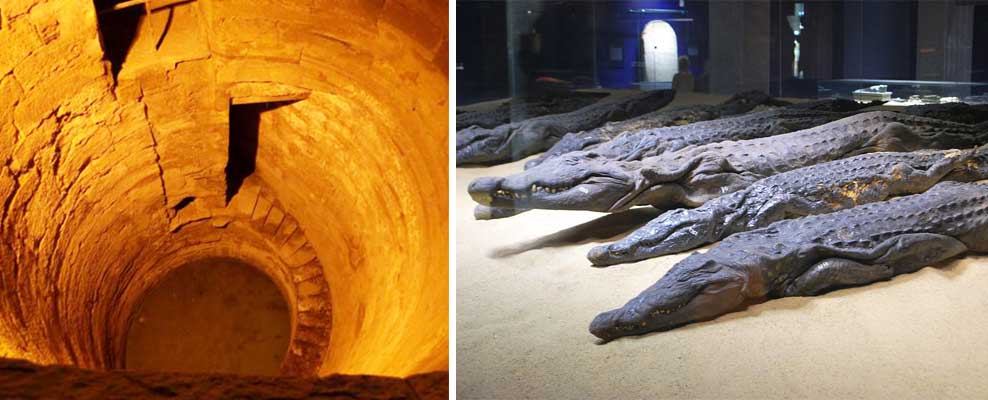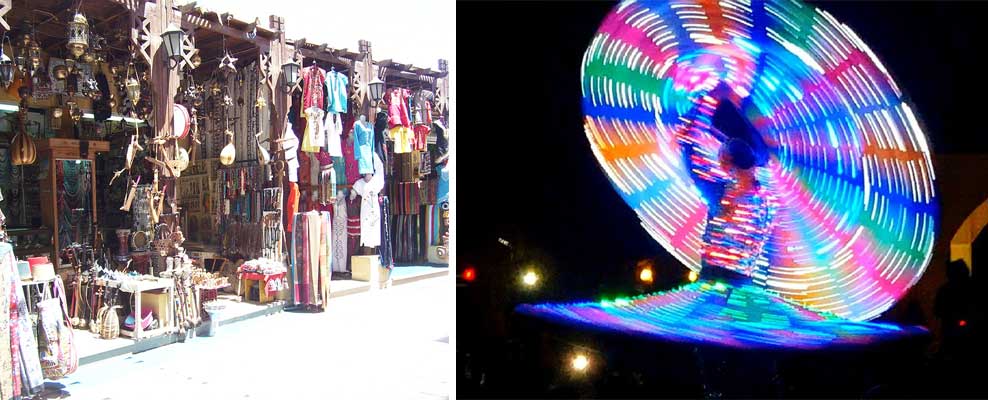Kom Ombo. It lies around 50 kms north of Aswan in Southern Egypt and it takes some hours to reach the place by a cruise boat. After an eventless sail on the Nile, it anchored at about 19.30 hours. We Indian tourists were a little apprehensive as most in the group had never even heard of Kom Ombo and didn’t know what to expect.
Fortunately, I had done a bit of research before reaching, as is my habit, and learnt that Kom Ombo or Nubt, as it was known in ancient Egyptian, means the “city of gold”. However, we saw no gold, not even a coin, in this agricultural town overlooking the Nile and situated on its eastern bank. At the river bank the boats dock one after the other horizontally and systematically. The one coming first stops closest to the land and the others follow. Hence, to get off, people on boats away from the bank, have to walk through the breadth of each boat docked before. Unfortunately, we were running behind schedule and did not realize that being late by only a few minutes would land us in the sixth spot. Thus we had to walk through the five large boats that had the good fortune of settling before us.
Land- ahoy dry land! The ordeal of walking through the “hotel” boats was over. Luckily no one had slipped and fallen into the Nile through the gaps between two boats. After assembling on the bank and listening to our tour guide Adeel’s instructions we began a rather long walk towards the Temple of Kom Ombo, the main tourist attraction and the reason for our being there. By then the sun had already set and in the dark, the temple complex shone brightly and its yellowish hue made it look quite spectacular.
This structure is actually a fusion of two separate temples, situated exactly side by side. The one on the left is dedicated to the falcon-headed God Haroeris or Horus (as we commonly know) the God of Wind, the second one is the temple of the crocodile-headed God Sobek, the God of Fertility. Apart from the intricate hieroglyphics that adorned the walls and pillars of this structure, one comes across symbols which probably seem to have some connections with surgical instruments of those days. Another notable symbol that our guide showed us was the cartouche, an oval shape filled with its own set of symbols. Quite dumbstruck, we walked in absolute silence, following his torch light which he used time and again to focus on something interesting and explain the details. To our amazement, we also came to know that the Copts had once used this place as a church!

We were then shown the Nilometer which was used in those days to study the level of the water of the river Nile. Seeing the intensity with which Adeel was explaining, I decided to go over and take a closer look at the Nilometer. To an ignorant tourist like me, it just looked like a deep well with a flight of stairs going down. However, the walls of the wells were filled with hieroglyphics. But, I did understand of what great help it must have been to the people of the past. There was so much to see and gaze at, that we just didn’t want to leave the place. We overstayed and thus had to pay the price. Our guide informed us that we could not be taken to a museum filled with mummified crocodiles, because we were behind schedule.

I thought that the return call from our guide would signal the end of the day’s tour. But it was not so. There was some kind of a ‘consolation’ prize waiting, mainly for the ladies. We could shop! Street vendors with their wares, trinkets and mementos, lined up on the path back to the river bank. Many, like my mother, forgot the mummified crocodiles and began bargaining and buying till they were ‘warned’ that it was indeed the time for our cruise boat to lift its anchor. Stranded at Kom Ombo all night! Never. Trinkets forgotten, even the ladies half walked and half ran, crossed three boats, as two had already set sail, and reached ours just in time.

Dinner was served and, thanks to the Gods of Egypt, it was quite good! Midway, there was an announcement of some post-dinner entertainment. Sounded great. So after dinner, I along with fellow-enthusiasts just strolled on to the deck of the boat. A gala presentation awaited us. A group of performers were all ready for a beautiful belly and ‘Tanoura’ dance accompanied by Arabic traditional instruments. Most of the guests, including my family, had by that time flopped into their soft beds, but some of us, unwilling to miss anything, enjoyed ourselves thoroughly. The dance was like nothing that anyone in our group had seen before and we stared absolutely mesmerized.
In the midst of everything, I realized that we had already started sailing and had left Kom Ombo behind. But a dim light was still visible from the temple site. We were moving away and would soon lose sight of the grand structure but those walls, the pillars, everything within the temple, would stand there for centuries to welcome hundreds and thousands of tourists from all over the world year after year.
